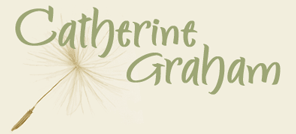
The Red Element
for Miranda Hill
In my aunt’s high-rise kitchen,
a turkey cools under a dish towel,
and peas, having boiled over,
simmer on the red element.
I’m looking out at the red line, the fall.
“My God,” she says. “You look like Rusty.”
Hand on my hip, neck bent gently,
my dead mother, standing there, about to light up.
Reviews & Praise
“…Catherine Graham is a poet of the intimate voice, the treasured, internalised experience…”
— Parameter Magazine (UK)
“In her stunning new volume of poems, The Red Element, Catherine Graham distills the whirling ambiguities of memories into gorgeous, mysterious single images, making the short poem triumph again on the Canadian literary landscape. With the dense, new energy of The Red Element, where all the poems form a bravura lyrical sequence, Graham proves herself as one of Canada’s premier younger poets.”
— Molly Peacock
“These poems are fine works. Choose any set of lines: “By the end of mid-October…. / Off come the leaves. / They whip through the world as birds.”
— George Elliott Clarke, The Chronicle Herald
“…more goose bumps per page than any collection in recent memory. Sticking to the poetic doctrine less is more, this collection is a tour de force in minimalism. Her steady hand and firm voice are breathtaking. They are empowered images, graceful sparks.”
— Angela Hibbs, Broken Pencil
“These poems are sharp, imaginative, and never cutesy… Graham’s poetry is especially admirable in its combination of accessibility, urgency, and imagination, making The Red Element one of my favourite poetry collections of the year.”
— Hannah Stephenson, Gloss
“Having carved out her particular niche on the Canlit map with her last two offerings, The Watch and Pupa, The Red Element is another groundbreaking delight.”
— Kane X. Faucher, Scene Magazine
“…it is worthwhile to let The Red Element (Insomniac Press, 2008) suck you into its vividly morbid world.”
— Matrix
“The oneiric surrealism engendered there is highly effective; it harnesses narrative purpose and stanza order in tension to the seemingly random menace of the poems’ imagery.”
— Arc Poetry Magazine
